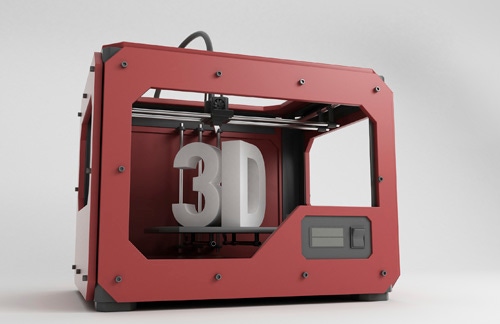Stryker to Build New 3-D Printing Manufacturing Facility in 2016
3-D printing won't replace Stryker's regularly manufactured knees and hips business any time soon, but it helps to build novel products that provide a competitive edge.
January 27, 2016

Arundhati Parmar
News reports about Stryker, which reported its fourth-quarter earnings on Tuesday, generally centered around the company's financial performance and the announcement that CFO William Jellison will retire in April.
But buried deep within the earnings conference call, Jellison made a revelation that is bound to thrill any 3-D printing enthusiast eager to see greater application of the technology in healthcare.
The retiring chief financial officer announced that Stryker is a building a new, state-of-the-art 3-D printing manufacturing facility this year.
The details of where and how big were missing from the call and a company spokeswoman didn't respond to queries, but Lobo and Jellison provided a few more comments that demonstrate Stryker's 3-D printing strategy or at least the current thinking at Stryker about the technology's value.
For one, 3-D printing works best with platics. Metals, to quote Lobo, is complicated. So for now, the 3-D printed products are not aimed at replacing the metal hips and knees business that is Stryker's bread and butter. Rather, the goal is to create innovative, novel products that gives the company a competitive edge.
One example of this, Lobo said, is Stryker's 3-D printed tibia baseplate that enables surgeons to implant a knee without cement. The FDA cleared the product in 2013. In addition, the company has launched a 3-D printed patella and last year launched revision cones "with geometry that can only be made with 3-D printing," Lobo said.
The 3-D printed revision cones has helped Stryker boost its revision knee surgeries business. Historically, the revision business has lagged the company's primary knee replacement business such that even when a surgeon used a Stryker knee to do the first procedure, he or she would go to a competitor to do the revision surgery when needed.
"Now that we have what we consider the best-in-class revision cones, not only do we keep that business — that surgeon stays with Stryker — we gain that sales, but now [the sales team has] something that they can go talk to a competitive surgeon about," Lobo explained.
This year, Stryker expects to launch a 3-D printed titanium interbody device for spine that allows bony in-growth enabled by the porous quality of the product.
"For the foreseeable future, at least the next three, four years or so, our focus is really on innovative new products and not replacing our existing products with 3-D printed products," Lobo explained. "The pipeline of innovative new geometries that can't be made without 3-D printing is the area of focus."
He noted that in ten years there could be a move to make 3-D printed hips and knees to drive down costs, but not in the next few years.
Why will the move to making 3-D printed metallic hips and knees take so long? Lobo provided an answer.
"So metal is much more complicated. It's explosive. It requires a lot of extra programming. You just don't buy a machine and just sort off to the races ...," Lobo said, according to a transcript of the call from Seeking Alpha. "I would just say that it's more complicated than plastics or other things that you read about in the mainstream press and that’s why for us, our focus is much more on innovative new products and not necessarily replacing total systems that will be many, many, many years ahead of us."
Still, the impact that 3-D printed products is already having on Stryker's knee and spine businesses have justified the building of a new state-of-the manufacturing plant. In other words, while the business may not be core yet, it's still meaningful and worth investing in.
Arundhati Parmar is senior editor at MD+DI. Reach her at [email protected] and on Twitter @aparmarbb
Stryker has been quiet on the M&A front last year, but here are the Biggest Medtech M&A Deals of 2015. |
You May Also Like


